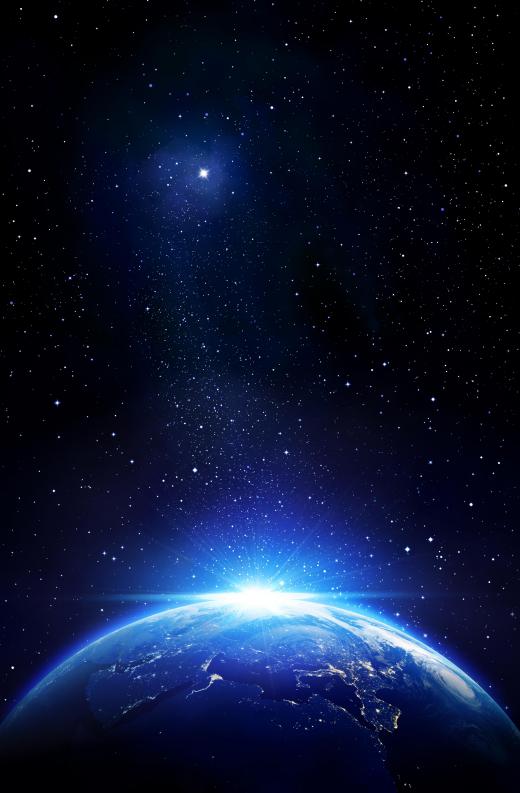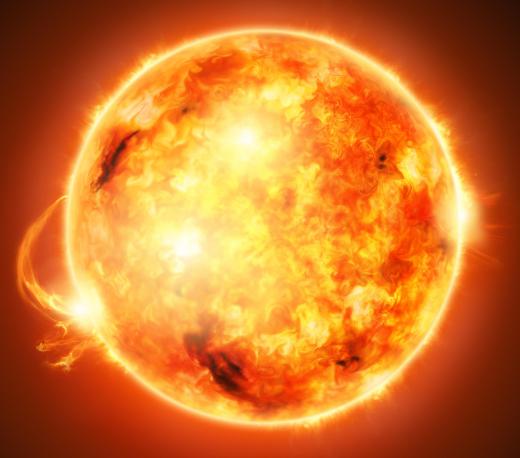What Is Earth Radiation?
Earth radiation is the amount of heat or light energy that the Earth emits back into space, largely as a percentage of the total radiation it receives from the Sun. This is also referred to as albedo, which is expressed as a ratio or percentage of the amount of light energy any stellar body, including planets, asteroids, or spacecraft, reflect off of their surface compared to what is received. Another term for Earth radiation is Outgoing Longwave Radiation (OLR), which makes general reference to the fact that what the Earth radiates into space is mostly infrared light waves invisible to human sight, which are a form of heat energy or black body radiation.
Earth surface radiation as a net loss of energy from the surface actually turns out to be fairly minimal, due to atmospheric dampening effects. The average amount of solar radiation energy received by the Earth above the confines of the atmosphere is estimated at 1,370 watts per meter-squared. As of 2010, peak radiation back into space took place in equatorial desert regions with values of about 350 watts per meter-squared, and dropped to less than 150 watts per meter-squared as one approached the polar caps. The actual amount of radiation that escapes into space from any one location is dependent on short-term conditions in the atmosphere that have a variable effect on the blocking and absorption of long wavelength light. As greenhouse gas levels increase in the atmosphere from global industrial activities, this effect for trapping heat also increases, reducing the general Earth radiation level overall.

The National Aeronautics and Space Administration (NASA) in the United States has calculated figures for various aspects of the Earth radiation balance. Of the sunlight received at atmospheric levels, 6% is immediately reflected into space and another 20% is reflected away by cloud cover. Another 19% of the radiation never reaches the surface, as 16% is absorbed by the atmosphere and 3% by clouds. Of the light that reaches the Earth's surface, 4% of this is reflected back into space instantly. The remainder of light that reaches the surface of land and oceans — 51% — is of what Earth radiation is actually composed.

Of the slightly more-than-half of the Sun's energy that impacts on the Earth's surface, about 70% of this eventually leaks back into space, while the rest is absorbed by the atmosphere and water vapor. This means that approximately one-third of the radiation that impacts the Earth's surface from the Sun is eventually lost back to space, as well as one-third of the light that never reaches the surface and is reflected away by the atmosphere itself. While the process of energy transfer is a continuous one, the Earth also radiates more into space at night than during the daytime, as the temperature of the Earth's surface has a direct impact on how much heat loss takes place, and the planet undergoes a gradual cooling effect at night.
Various surfaces on Earth have different levels of albedo, however, or ratios for how much light energy they absorb and reflect. An albedo of 0 would equal total absorption of energy, and a value of 1 would be total reflection, both of which never occur in reality. Surfaces such as concrete have a reflective quality of 55%, grass of 25%, and typical soil of 17%. Regions of the Earth that have a very high albedo for nearly total Earth radiation effects include those covered by fresh snow, where it is anywhere from 80% to 90%, and those with a very low albedo and nearly total absorption of light energy include conifer forests at the height of the growing season, with a reflective quality of 8%.
AS FEATURED ON:
AS FEATURED ON:












Discuss this Article
Post your comments